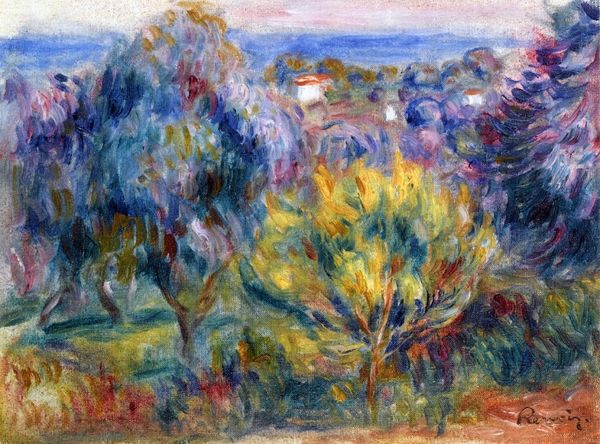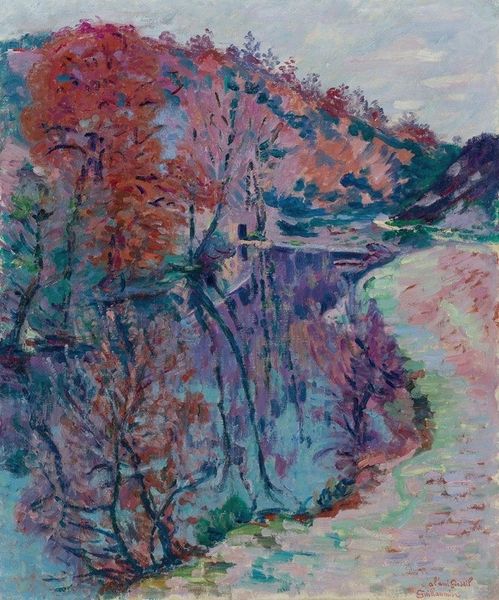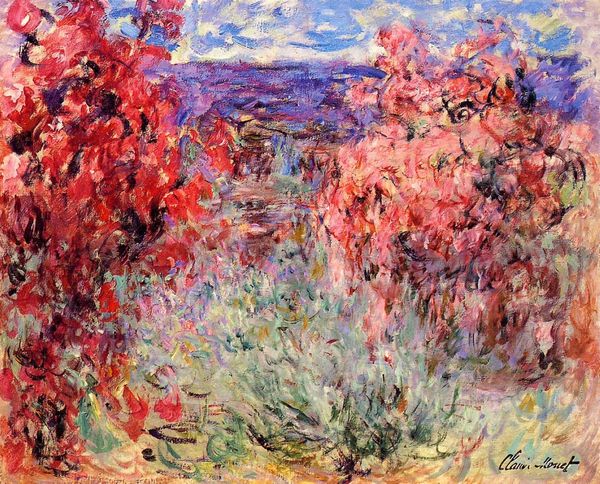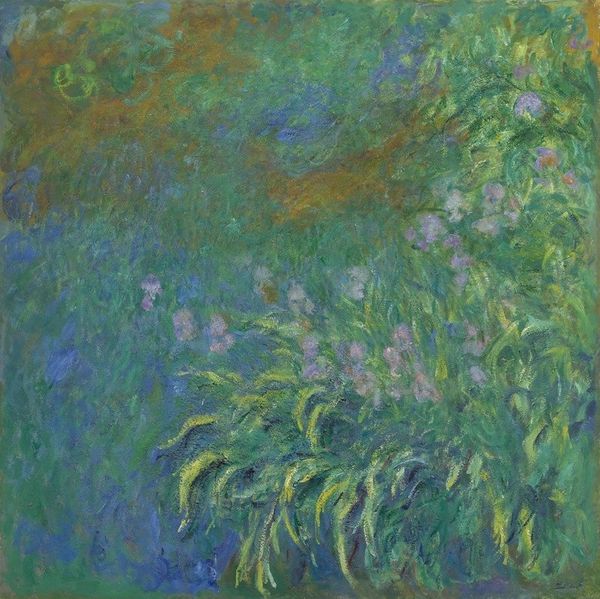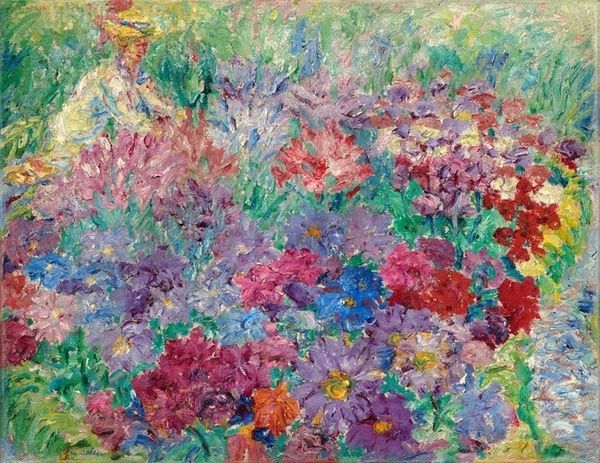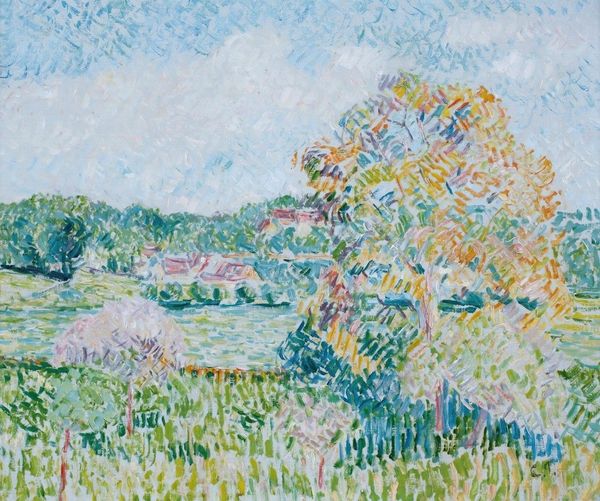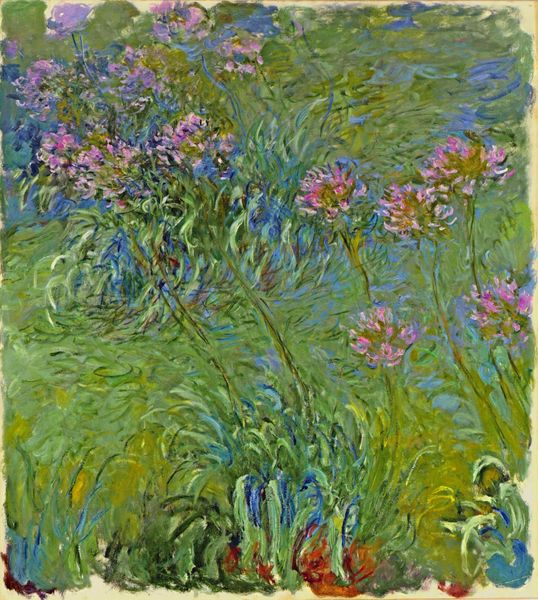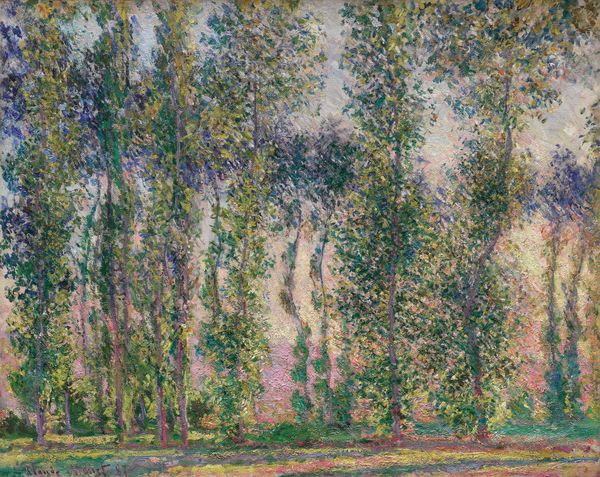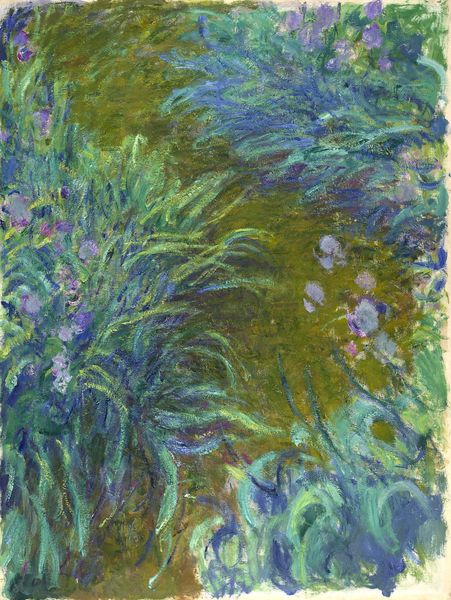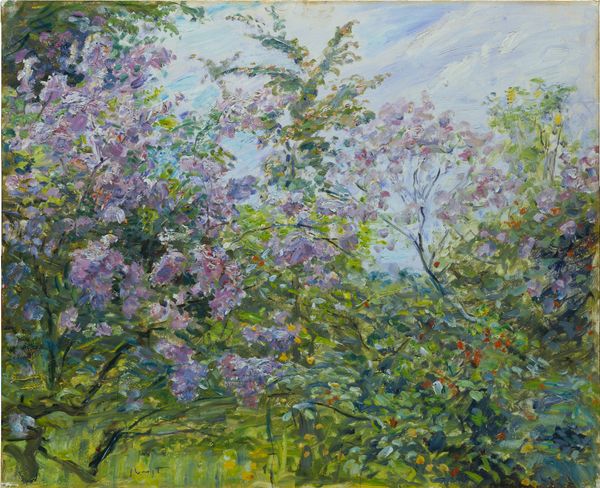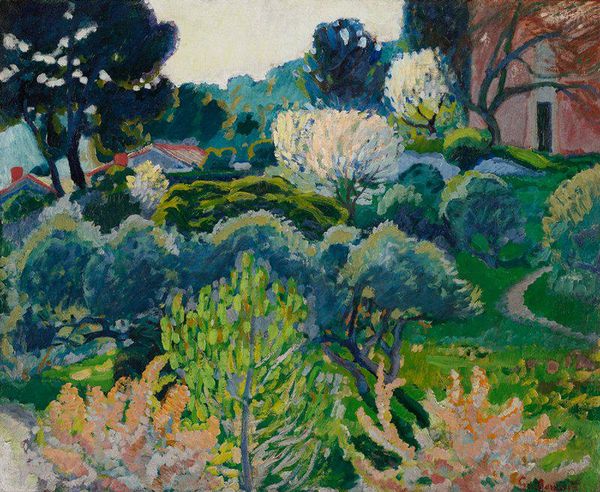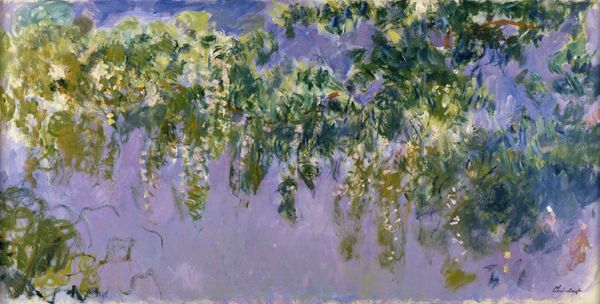
painting, plein-air, oil-paint
#
painting
#
impressionism
#
plein-air
#
oil-paint
#
landscape
Copyright: Public Domain: Artvee
Editor: Here we have "La Maison dans les Roses," which translates to "The House Among the Roses." It’s an oil painting, done *en plein air* by Claude Monet, seemingly in the late phase of his career. It feels incredibly immersive and almost overwhelming in its floral abundance. What's your take? Curator: Monet, particularly later in his life, was deeply invested in his gardens at Giverny. But the critical response to these works reveals a certain tension. They were commercially successful, allowing him to maintain his lifestyle. But what do you think that repetitive subject matter signals? Editor: I guess there is a feeling that he stopped being avant-garde and just became popular. Did that perception affect how his work was displayed in galleries then? Curator: Precisely! It certainly shaped institutional attitudes. Monet's focus became less about pushing boundaries and more about personal exploration within a controlled environment, which, ironically, distanced him from the urban realities that initially fueled Impressionism. Consider, the avant-garde aimed to challenge bourgeois tastes and societal norms. By painting serene landscapes, did Monet reinforce or subvert those norms? Editor: Hmmm, that's a tricky one. I see how the critics at the time might see it as him becoming part of the establishment and catering to their idea of beauty, which is the very thing Impressionism set out to challenge. But the subject, in this context, makes it beautiful in an everyday, accessible sense. Curator: Exactly. It’s the duality inherent in much of his later work, navigating personal expression, the art market, and evolving societal expectations. Editor: I never thought about Monet in terms of challenging socio-political things! Thank you, this makes me see the work in a completely new light!
Comments
No comments
Be the first to comment and join the conversation on the ultimate creative platform.
